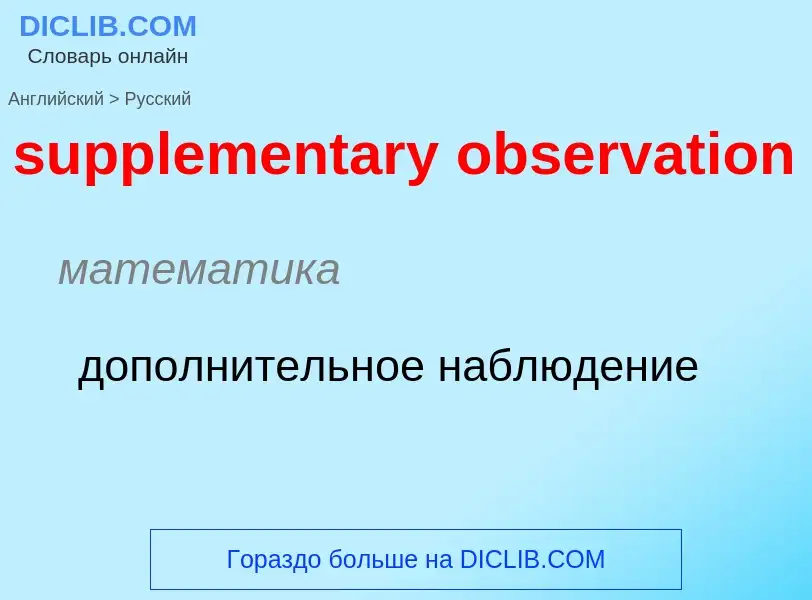Tradução e análise de palavras por inteligência artificial ChatGPT
Nesta página você pode obter uma análise detalhada de uma palavra ou frase, produzida usando a melhor tecnologia de inteligência artificial até o momento:
- como a palavra é usada
- frequência de uso
- é usado com mais frequência na fala oral ou escrita
- opções de tradução de palavras
- exemplos de uso (várias frases com tradução)
- etimologia
supplementary observation - tradução para russo
математика
дополнительное наблюдение
Definição
Wikipédia

The contingent vote is an electoral system used to elect a single representative in which a candidate requires a majority of votes to win. It is a variation of instant-runoff voting (IRV). Under the contingent vote, the voter ranks the candidates in order of preference, and the first preference votes are counted. If no candidate has a majority (more than half the votes cast), then all but the two leading candidates are eliminated and the votes received by the eliminated candidates are distributed among the two remaining candidates according to voters' preferences. This ensures that one candidate achieves a majority and is declared elected.
The contingent vote differs from IRV which allows for many rounds of counting, eliminating only one weakest candidate each round. IRV allows a small chance the candidate outside the top two can still win. The contingent vote can also be considered a compressed form of the two-round system (runoff system), in which both 'rounds' occur without the need for voters to go to the polls twice.
Today, a special variant of the contingent vote is used to elect the President of Sri Lanka. Another variant, called the supplementary vote, is used to pick directly elected mayors and police and crime commissioners in England. In the past the ordinary form of the contingent vote was used to elect the Legislative Assembly of Queensland from 1892 to 1942. To date, this has been the longest continuous use of the system anywhere in the world. It was also used in the US state of Alabama in the 1920s.




![Visitors on the observation deck of the [[Skylon Tower]], which overlooks [[Niagara Falls]]. Visitors on the observation deck of the [[Skylon Tower]], which overlooks [[Niagara Falls]].](https://commons.wikimedia.org/wiki/Special:FilePath/Niagara Falls - ON - Skylon Tower (Aussichtsdeck).jpg?width=200)
![TK Elevator Test Tower]], which overlooks [[Germany]]'s [[Black Forest]] and the [[Alps]] TK Elevator Test Tower]], which overlooks [[Germany]]'s [[Black Forest]] and the [[Alps]]](https://commons.wikimedia.org/wiki/Special:FilePath/Thyssenkrupp Testturm - Aussichtsplattform aussen.jpg?width=200)
![View from the [[Shanghai Tower]] observation deck. View from the [[Shanghai Tower]] observation deck.](https://commons.wikimedia.org/wiki/Special:FilePath/View on the observatory level of Shanghai Tower.jpg?width=200)
![The 10 m observation deck of [[Ronda]], Spain, overlooks the [[Depression of Ronda]] plain over 100 m below. The 10 m observation deck of [[Ronda]], Spain, overlooks the [[Depression of Ronda]] plain over 100 m below.](https://commons.wikimedia.org/wiki/Special:FilePath/Viewing platform - top right.jpg?width=200)
![A multi-level [[tree house]] in [[Cape Town]], [[South Africa]], with an observation deck on top A multi-level [[tree house]] in [[Cape Town]], [[South Africa]], with an observation deck on top](https://commons.wikimedia.org/wiki/Special:FilePath/TreeHouse-Elevated01.jpg?width=200)
![An observation deck place in Rokko Garden Terrace, [[Mount Rokkō]], Kobe, Japan An observation deck place in Rokko Garden Terrace, [[Mount Rokkō]], Kobe, Japan](https://commons.wikimedia.org/wiki/Special:FilePath/Rokko garden terrace03s3200.jpg?width=200)
![An observation deck in [[West Berlin]] with a view of [[Potsdamer Platz]] on the other side of the [[Berlin Wall]], 1977. At the bottom of the steps a placard shows what the square looked like in 1929. An observation deck in [[West Berlin]] with a view of [[Potsdamer Platz]] on the other side of the [[Berlin Wall]], 1977. At the bottom of the steps a placard shows what the square looked like in 1929.](https://commons.wikimedia.org/wiki/Special:FilePath/Observation deck overlooking Potsdamer Platz with placard showing 1929 view.jpg?width=200)
![[[Brooklyn Bridge]] as viewed from the [[One World Observatory]] in New York City [[Brooklyn Bridge]] as viewed from the [[One World Observatory]] in New York City](https://commons.wikimedia.org/wiki/Special:FilePath/One World Observatory View.jpg?width=200)

